Takara Tomy is a millennial industry giant of toy production, whose products have probably found their way into everyone’s homes at least once. Naturally, my introduction to the brand came through their ANIA “Animal Adventure” line of palm-sized action figures featuring extant and extinct animal life. Beginning in the early 2010s, Tomy released the ANIA line primarily under small (AS) and large (AL) categories, with the prehistoric animals mostly populating the AL category. Most of these figurines were of dinosaurs, but no. 06 in the AL line featured the first (extinct) non-dino: the ubiquitous pterosaur Pteranodon, which began arriving to retailers around November 2014.
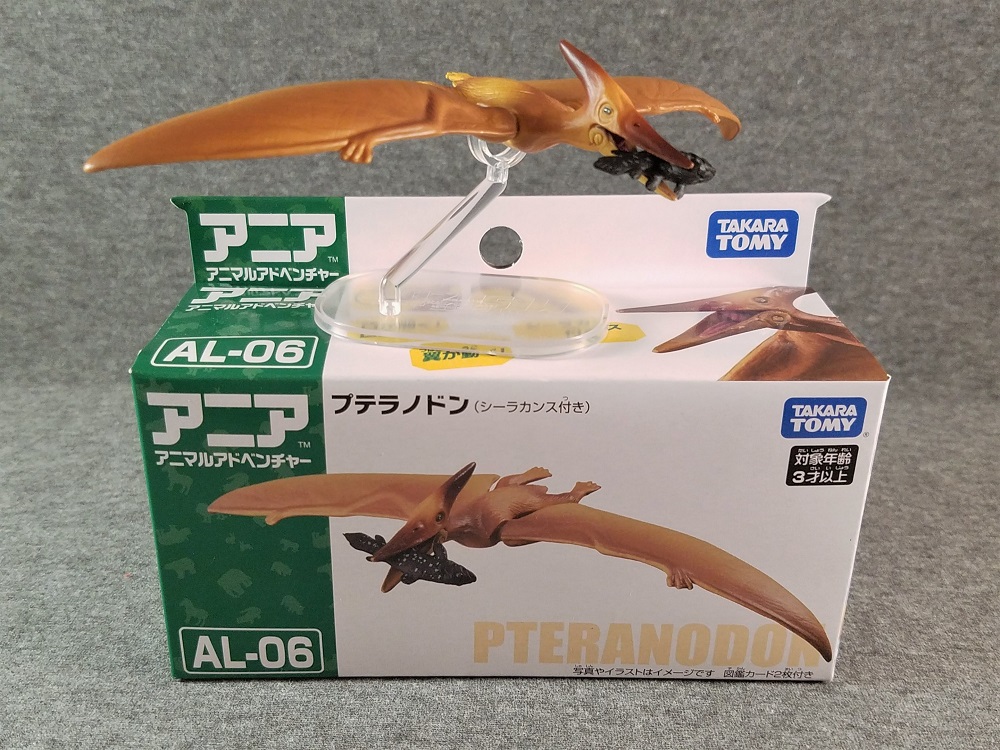
Probably everyone who can name one dinosaur genus can also name Pteranodon (provided they don’t accidentally dub it “Pterodactyl”). Out of all pterosaurs, Pteranodon is surely the most famous, instantly recognizable by its toothless bill and single pointed crest. Most of the early ANIA creature selections were safe, easy-to-recognize choices, so Pteranodon made for a no-brainer in the line. Like all ANIA figurines, the Pteranodon comes in a small green and white cardboard box, with a collapsible back hoop for hanging on a rung. The box is decked out with branding, toy information, and animal facts, all in Japanese, complimented by an original illustration of the chosen animal on the back. Inside the box, the figure (and its accessory) are loosely wrapped in a plastic sleeve with additional cardboard shelving to protect the figurine and keep it stable. Two fact cards are also included, one in Japanese and one in English.
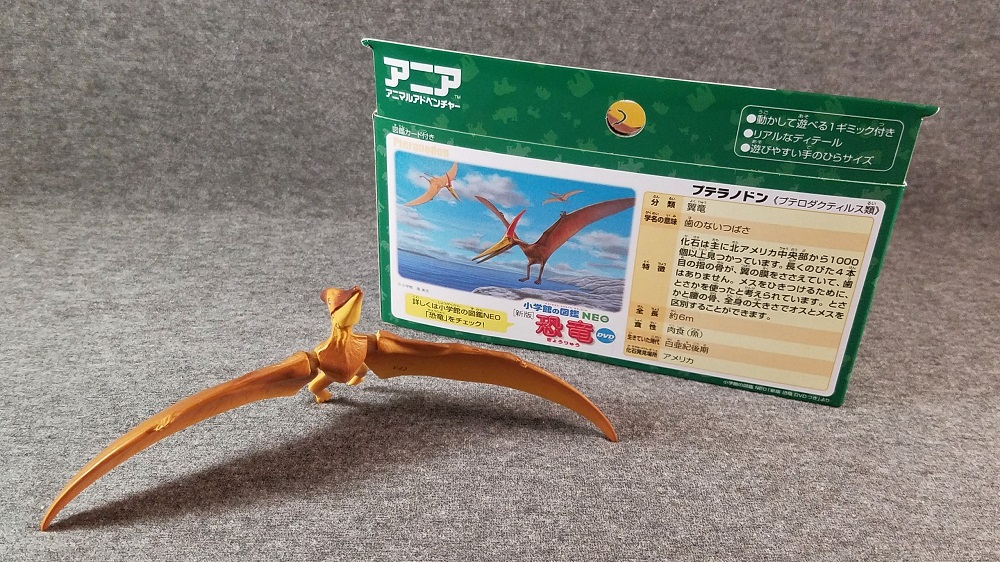
Once removed from the box, the Pteranodon figurine measures 6.5 cm (2.5 in) long from beak to toe, and its wings stretch 16 cm (6.25 in) across. For an adult male animal with a wingspan of 5.6 m (18 ft – although some specimens grew even larger), the ANIA figurine fits perfectly in 1:35 scale – at least by basic dimensions. Toy manufacturers sometimes underestimate the bizarre proportions of pterosaur anatomy, and while the wings are designed reasonably for a 2010s reconstruction, the body and head are out of whack. The proportions have been “normalized” and might not look incorrect to a casual buyer, but male Pteranodons had HUGE skulls which (from beak to crest) outstretched the combined lengths of their neck, torso, and hind legs. Admittedly, this might partially be an engineering issue of making sure the toy fits inside its standardized box; the artwork on the back appears much more accurate to current science. Even so, I think the dimensions of the torso and legs could still reasonably be adjusted to match the fossil material better, without compromising the overall shape.
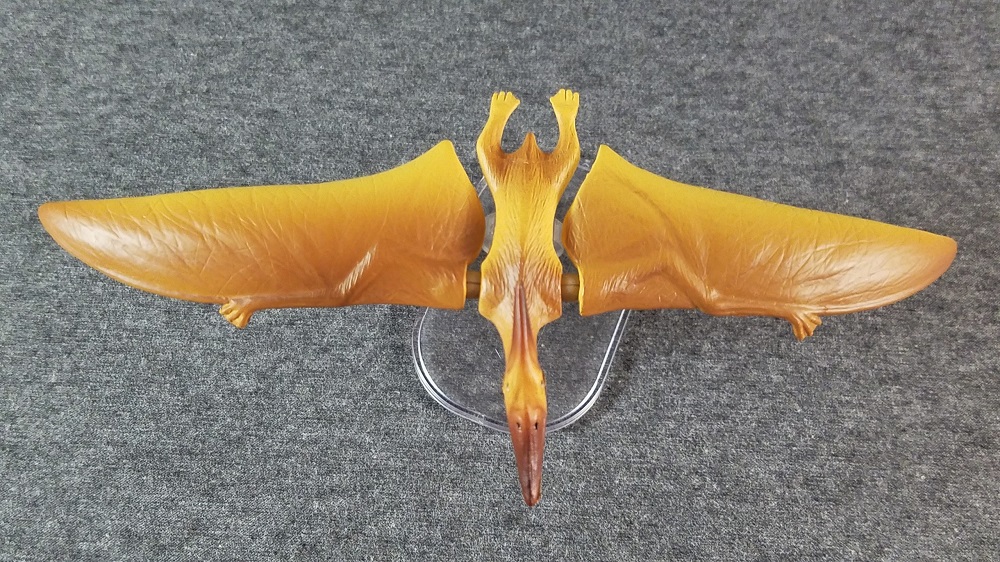
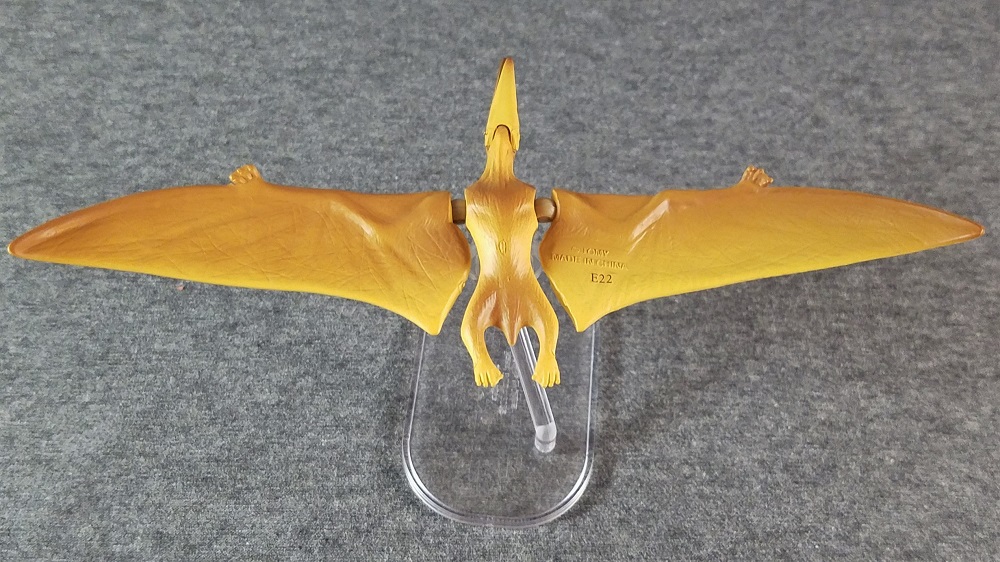
The wing membranes do stretch down to just past the knees, which is pretty close to what’s considered accurate, and are appropriately shaped as broad, slightly-crescented structures in mid-flap. A hint of a membrane (patagium) is also evident between the legs and tail, and a thin coating of hair/feathers/pycnofibres is sculpted onto the body and upper arms. The general shape of the skull is correct, with a gently swooped bill and an S-curved crest; however as mentioned previously, both the bill and the crest (but especially the bill) should be significantly longer. The face does suffer from a bit of shrinkwrapping, with sunken orbits and fenestrae that make the pterosaur look rather aged up close.
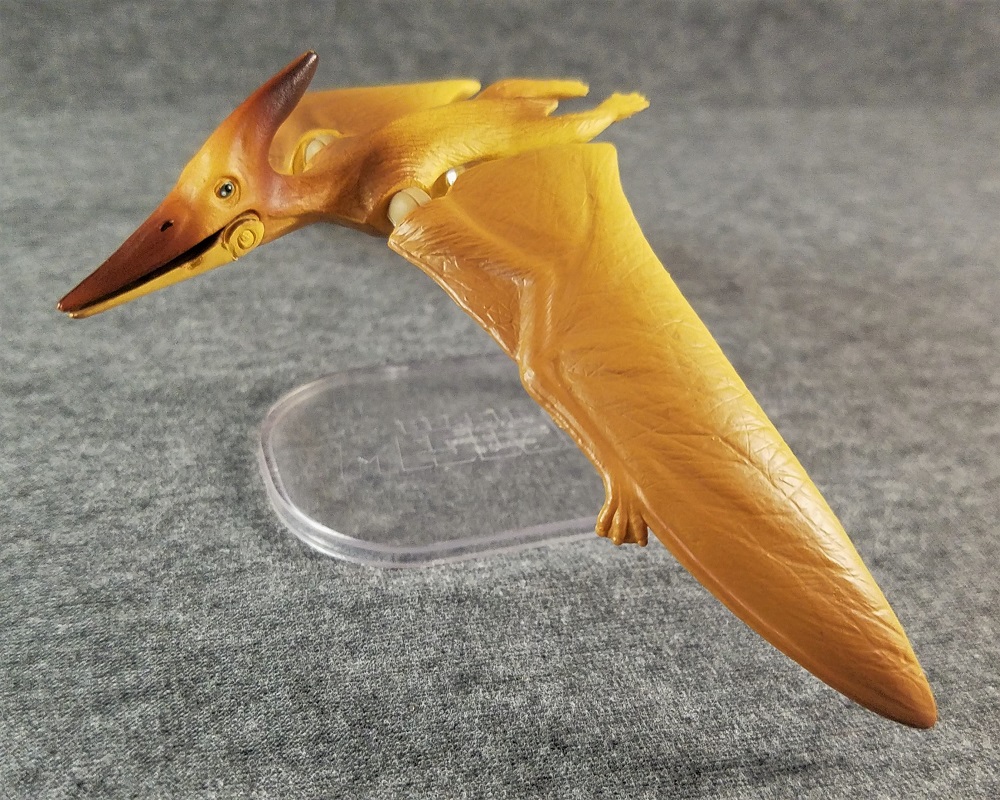
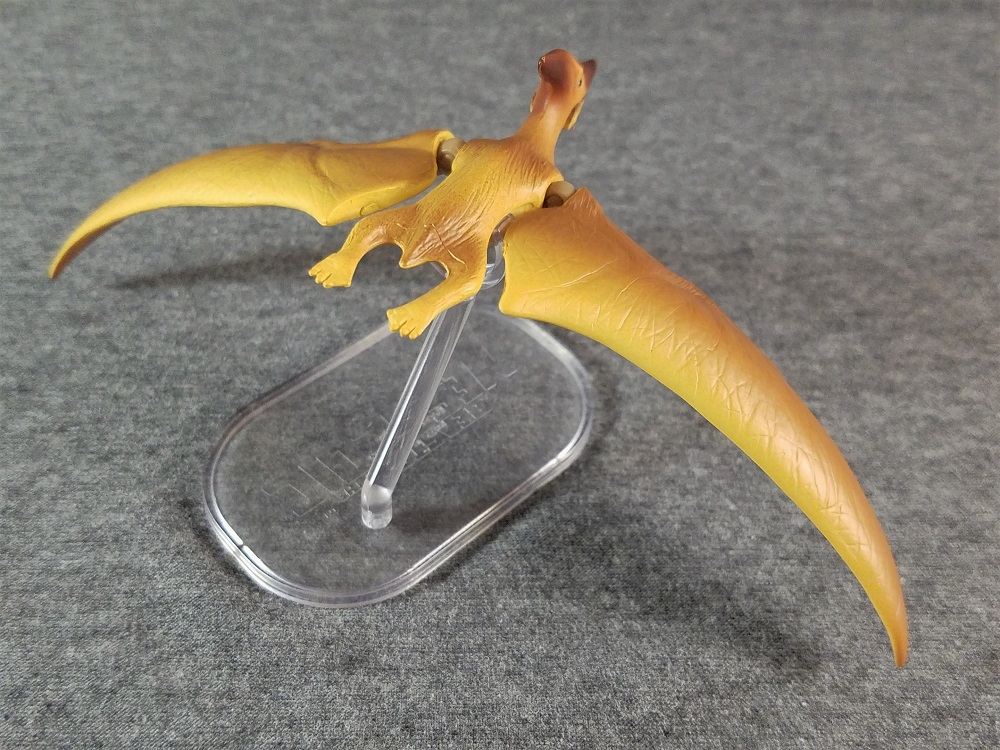
ANIA figurines are typically articulated to a minor extent, and Pteranodon has three points of articulation: one in the beak, and two in the wings. Each wing has a swiveled hinge joint at the shoulder, allowing the pterosaur to flap up and down, or swing its wings crudely forward or backward for a more unique pose. The figurine does not come with any sort of stand, so collectors who want to display it will need to borrow a stand from elsewhere or just balance the figurine between its wingtips and feet. The jaw has a basic hinge joint to open and close the mouth; sadly my copy doesn’t appear to have its jaw properly aligned and doesn’t close completely flush. The articulation pins are a tad noticeable, which may be unpleasant for some collectors; but keep in mind this is still basically a kids’ action figure retailing for the equivalent of 5-8 dollars.

Coloration is simple, but decently applied to the Pteranodon: a gradient of caramel-brown and amber-yellow washes the figurine front to back, with some additional darker highlights on the beak and crest. It’s a pleasant enough color scheme that’s probably very economic for Takara Tomy. Still, pterosaurs may very well have been much more colorful creatures, and it feels like a missed opportunity to at least decorate the crest a little more. Takara Tomy has reissued the figurine in other sets with paint variations, and least one repaint does exist under the “Adventure Continent” subtitle which puts a little more variety in the color scheme.
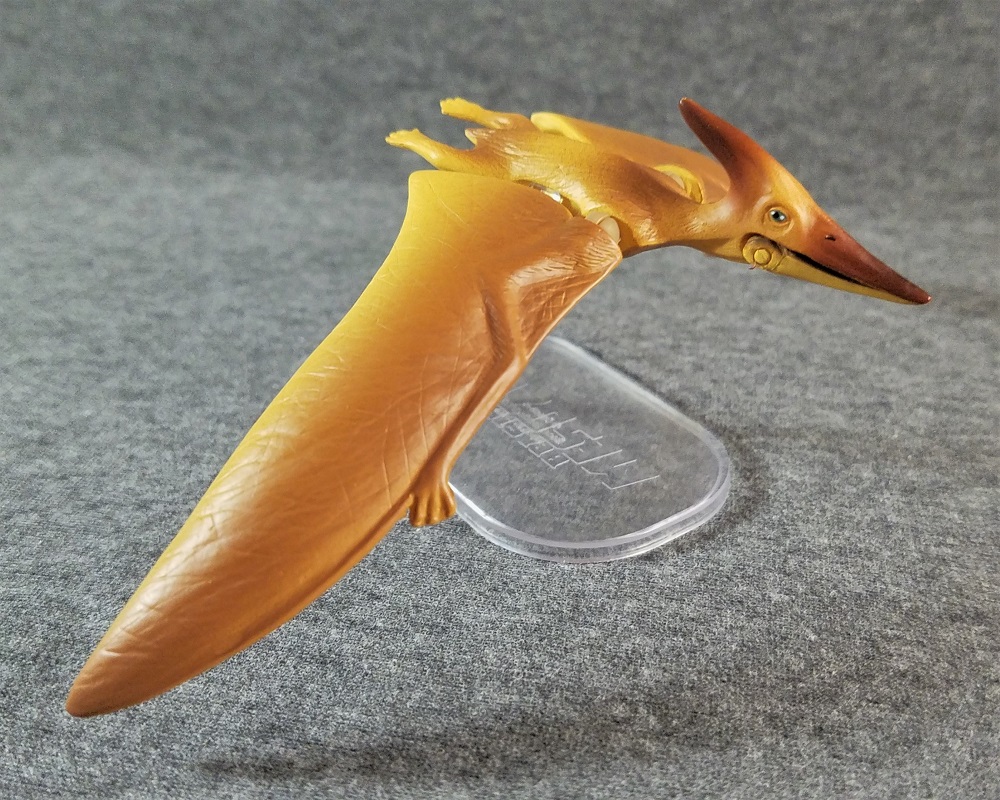
One accessory is included with the Pteranodon, in the form of a miniature coelacanth to fit inside the pterosaur’s mouth. The tiny fish is very nicely sculpted for being just 2.5 cm (1 in) long, with distinct fatial features, rayed fins, and subtle cross-hatching to signify scale patterns. Silvery-grey speckles and eyeballs pop on the black base. As a minor complaint, the minifigure appears to be based on the modern genus Latimerius, which is not known to exist in the Mesozoic era at all; most buyers probably won’t notice or care, but it would have been neat if Takara Tomy put in a little extra effort to pair their Pteranodon with a genus of coelocanth (or any other fish) that actually coexisted with the pterosaur.
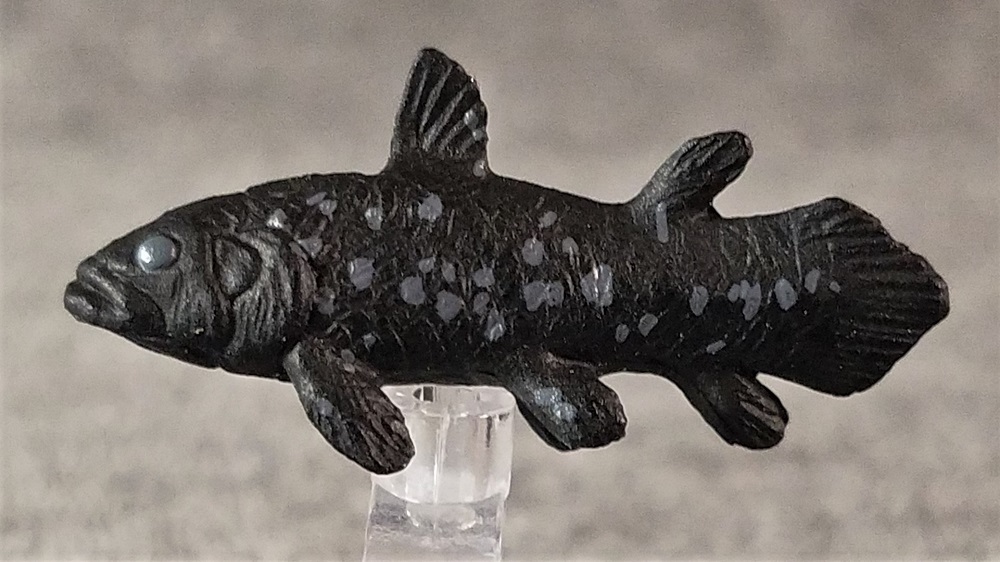
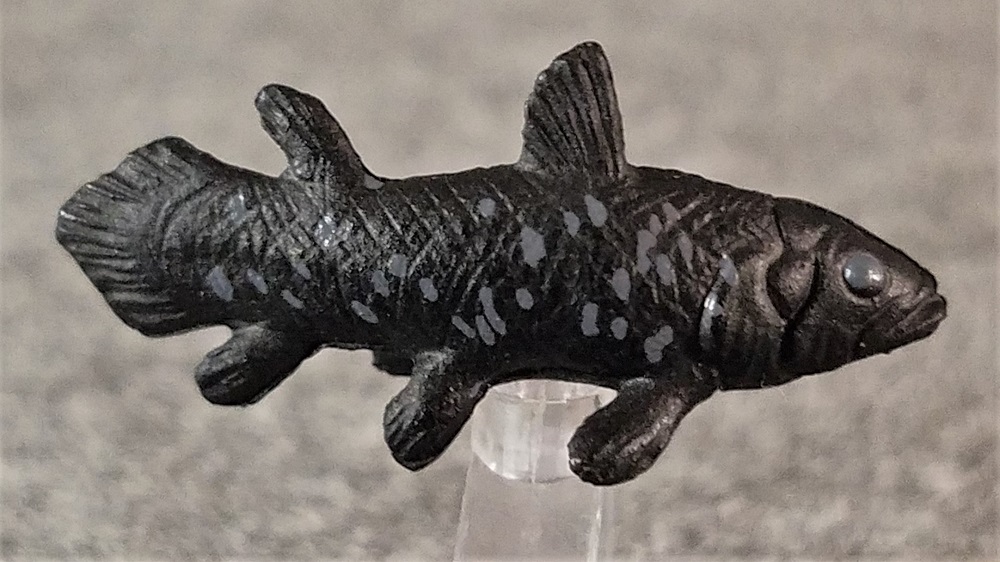
Now over a decade since it was first released, Takara Tomy’s ANIA Pteranodon is pretty much a harmless kids’ toy that gets the general picture of the animal correct, but is certainly dated as a reconstruction. It’s not one of the best Pteranodons out there, but for its size and playability, it’s not one of the worst either; and if you already have any of the ANIA prehistoric line this pterosaur will compliment them nicely. You can still find the Pteranodon in stock and sold by various retailers, particularly Japan-based shops like Hobby Search and HobbyLink Japan.
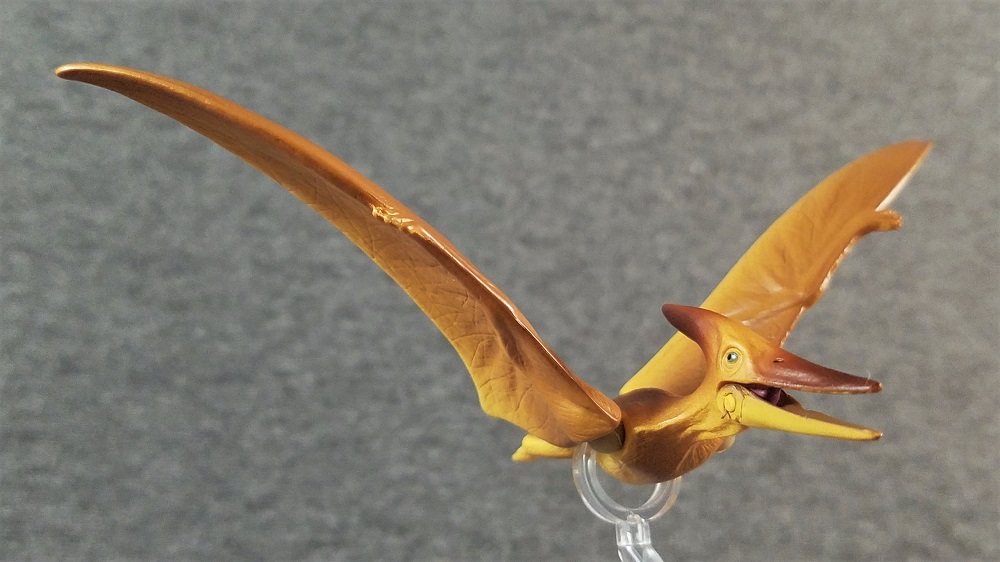
Disclaimer: links to Ebay and Amazon on the DinoToyBlog are affiliate links, so we make a small commission if you use them. Thanks for supporting us!




I generally avoid articulated figures (especially for things like wildlife and dinosaurs), but I bought a couple ANIA figures of unique/unusual wildlife and they were impressively nice in-hand!
Reminders me of the old Dino Riders Pteranodon toy.
Great review. It’s too basic, but I like it anyway. 3 stars!